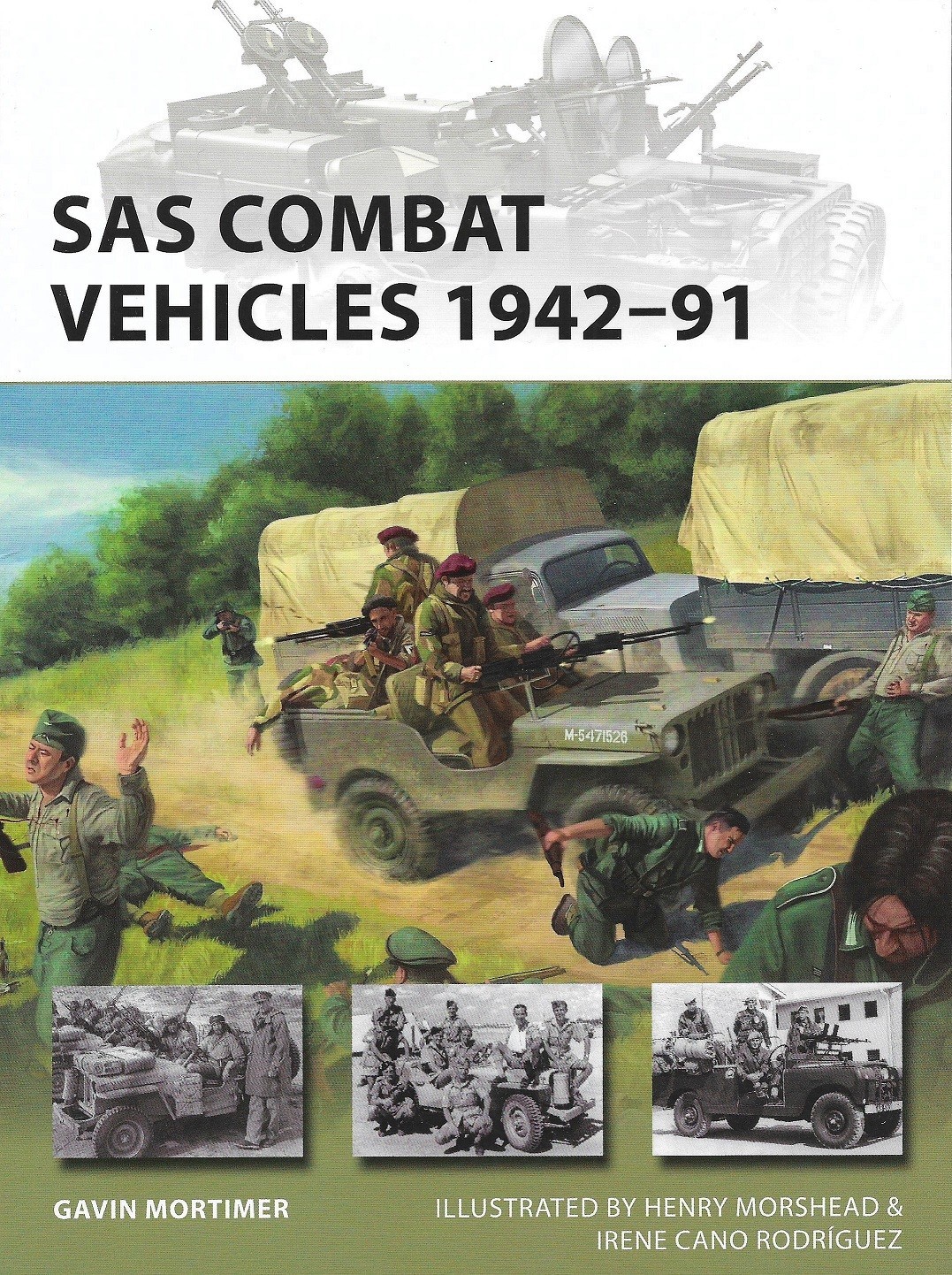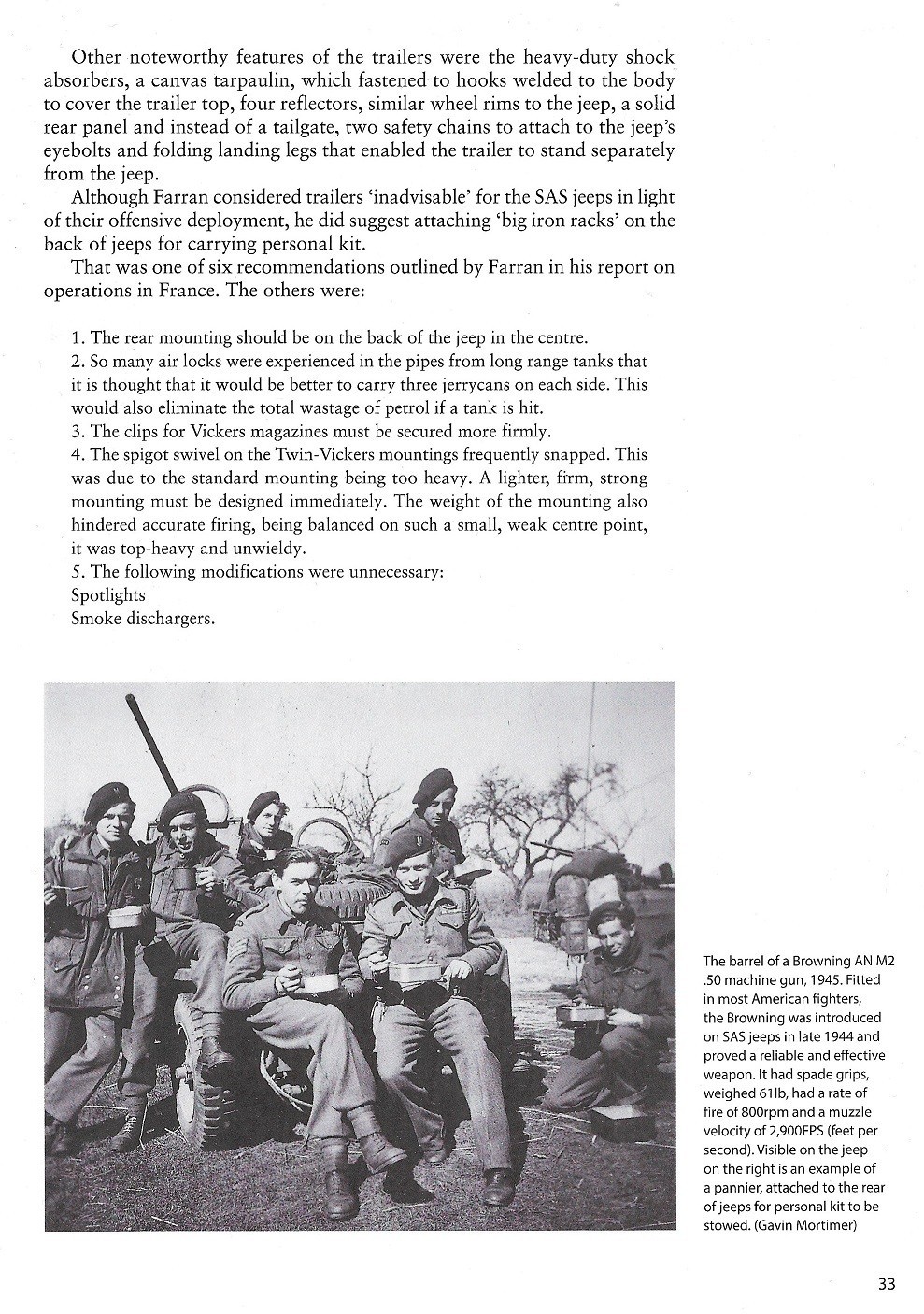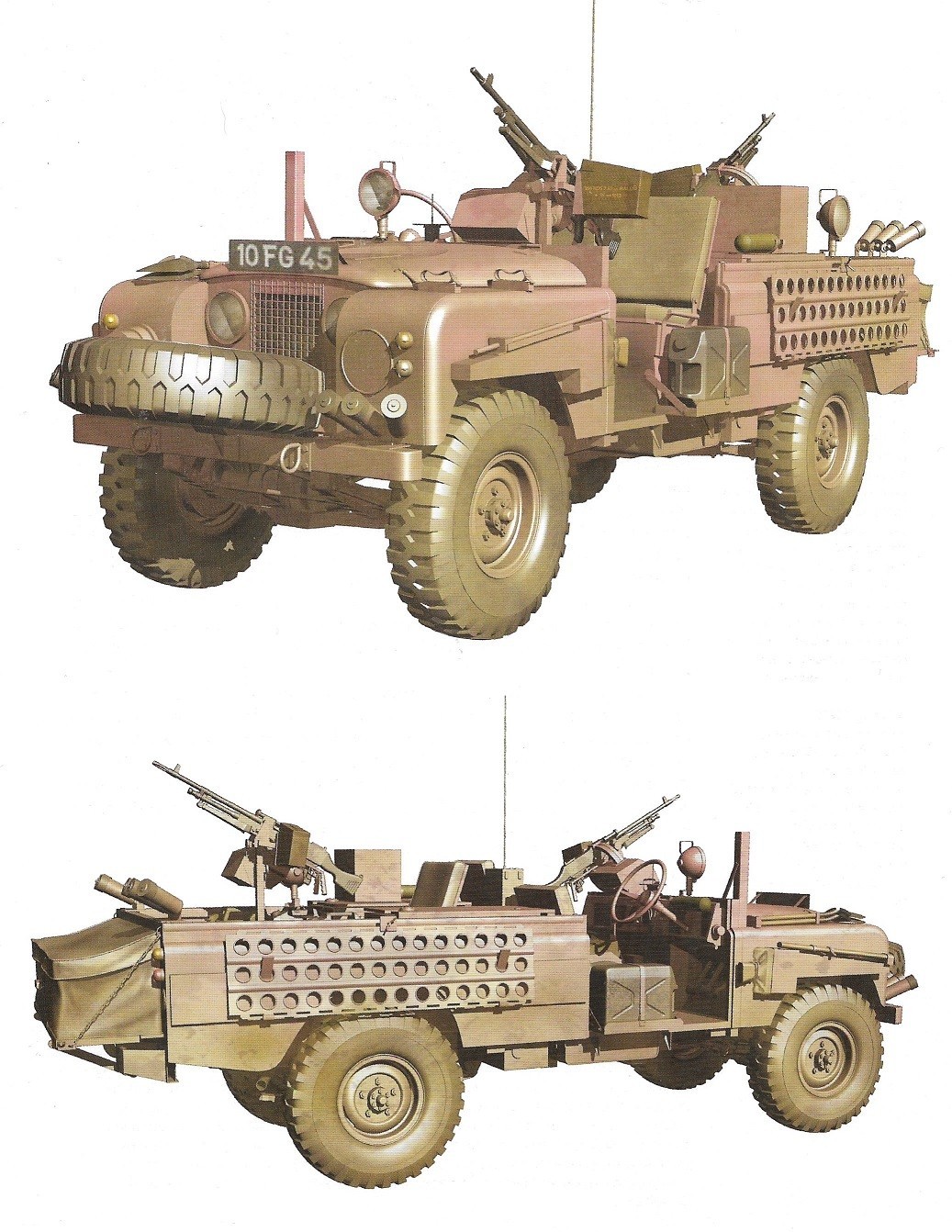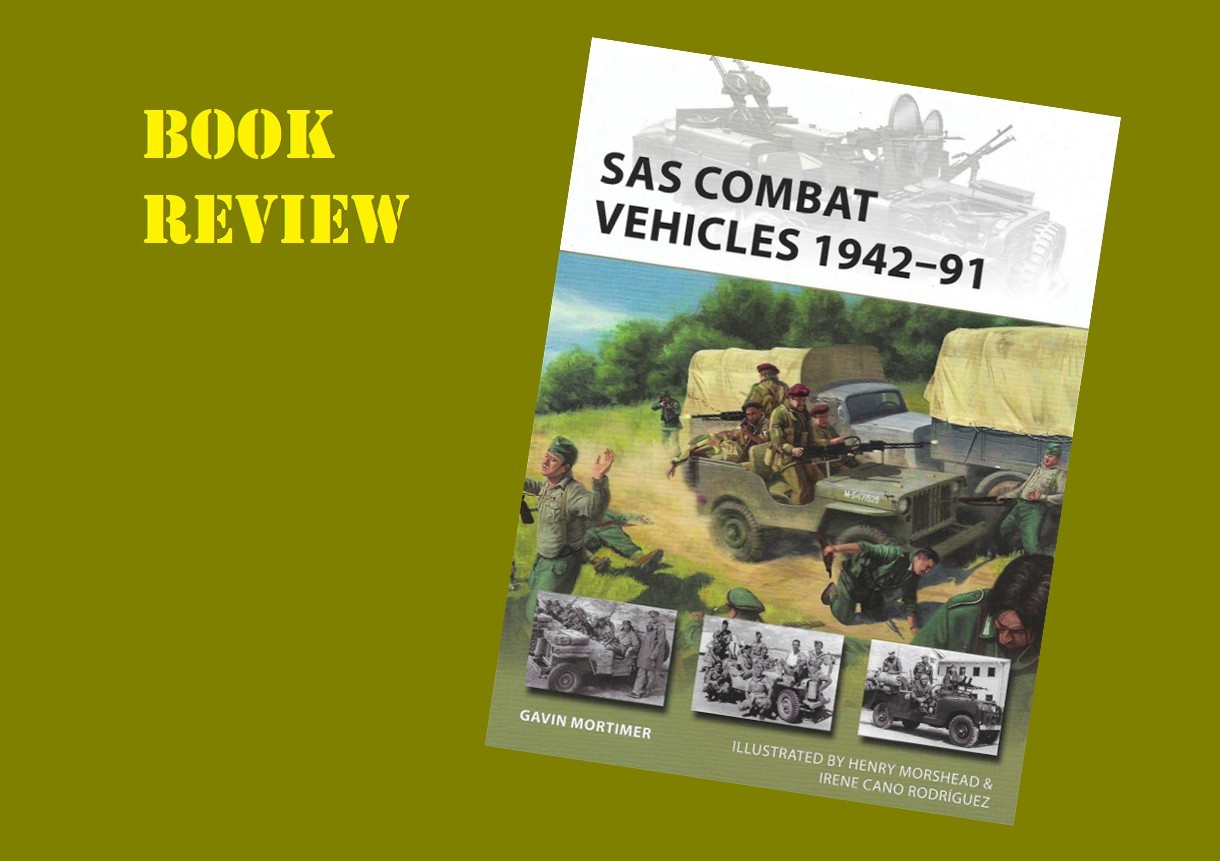HISTORY:
** The SAS, the world’s most famous special operations unit, made its name in North Africa, shooting up Axis airfields from heavily armed Willys jeeps. It was the start of a long tradition of fighting from light, fast, highly modified four-wheel-drive vehicles. Following D-Day, the SAS Brigade took its jeeps deep inside occupied France and then into Germany itself, harassing enemy troops movements, calling up air strikes, carrying out reconnaissance and eradicating pockets or fanatical Nazi resistance.
When the SAS was recreated after the war, the Willy’s place was taken by the new Series 1 Land Rover. With the SAS again specializing in desert warfare, in the 1960s, the unit received a unique new Land Rover, the stripped-down, heavily armed ‘Pink Panther’; in the 1980s, these made way for the HCPU Desert Patrol Vehicle, which the SAS famously used to hunt Scuds during the 1991 Gulf War. Illustrated throughout with rare photos and meticulous new artwork, this fascinating book offers a rare insight into one of the most prestigious and secret forces of modern times. **
** Quoted from the back cover of the book.
THE BOOK:
Osprey Publications has released SAS Combat Vehicles 1942-91 as Number 295 in their New Vanguard series. It is a soft cover book with 48 pages. Included with the text are black and white photographs, color illustrations, detailed captions and more. It has a 2021 copyright, a publication date of May 27, 2021 and the ISBN is 978-1-4728-4680-8.
THE CONTENTS:
- Introduction
- Self-Sufficiency: The Blitz Buggy
- SAS Desert Jeeps
- The Italian Job, 1943
- Sprouting Wings: Jeeps in France, 1944
- Into Germany
- Post-War: The Land Rover Era
- Further Reading
- Index
THE TEXT:
Author Gavin Mortimer covers the SAS (Special Air Service) history of obtaining their own vehicles and the development and customization of them and their use from their origins during World War II up through their use during Desert Storm in the 1990s. Gavin Mortimer details how the SAS were originally dependent of the LRDG (Long Range Desert Group) for transportation during their missions in North Africa and how David Stirling helped the SAS become independent from the LRDG for their transportation needs with the accusation of their own vehicles which would become the standard transportation for SAS missions. The majority of the text is dedicated to the Willys jeep and its use throughout World War II with the remaining text being dedicated to the Series I and Series II Land Rover, the Austin Champ and the Land Rover HCPU (High-Capacity Pick Up). Gavin Mortimer details each of the vehicles in great detail and discusses the positive and negative features of the vehicles and details modifications made to them along with the weapons and other equipment added to enable them to fill the role for which they were adopted. Along with his own words Gavin Mortimer has also provided several quotes and first-hand accounts from key individuals providing specific details and pertinent information in regards to the SAS vehicles. A section I found to be interesting is where the author details the positive and negative aspects of using the jeep trailer as well as what was carried in it, the cargo weight limit, it’s amphibious capabilities and more. The text in the book is nicely written and well detailed. As I read through the text, I didn’t notice any spelling errors but I did find some grammatical errors. Most of these were in the use of incorrect words such as “hydraulic breaks” instead of “hydraulic brakes” and “read twin Vickers” instead of “rear twin Vickers” as well as missing words such as on page 31 where it states “on the 12th August” where it should state “on the 12th of August” and extra words being included such as on page 44 where the word “so” is added to a sentence making it read funny. Grammar and spelling might not be an important factor to everyone however it is something that I take notice of and pass on my findings. I feel that if the text is well written then it shows that the author has taken the time to be professional with their writing. Anyone wanting to add an excellent reference and history book on SAS combat vehicles, particularly the Willys Jeep, to their personal library will be pleased with this very informative and interesting book.
THE PHOTOGRAPHS:
A total of 37 black and white photographs and 7 color photographs are included in this volume. The photographs range from wide angle photographs to close-up photographs. With the exception of a couple of well-known and often used photographs of the SAS in North Africa, I would say that the majority of the photographs chosen for this book are for the most part lesser-known photographs as opposed to photographs that are featured in many other titles that deal with the same subject matter. The majority of the photographs are clear and easily viewable; however, a few have an out of focus look to them and some appear to be too dark, and others appear too light. This is typical for the discussed periods of history. The quality of some of the photographs do not take anything away from the book. Author Gavin Mortimer stuck to the title of the book and chose subject specific photographs and did not include photographs that strayed from the main subject of the book. The majority, if not all, of the photographs will prove to be a wealth of information to the scale military vehicle and figure modeler as well as anyone interested in British SAS combat vehicles and the uniforms, weapons and warfare of the discussed periods due to the details they contain.
THE ILLUSTRATIONS:
There are 7 color illustrations included in the volume by illustrators Kenny Morshead and Irene Cano Rodriguez. The illustrations are very well done, nicely detailed and are of:
Plate A
Blitz Buggy, Libya 1942
Plate B
Jeep Dropped by Parachute, France 1944
Plate C
Operation Houndsworth, France 1944
Plate D
SAS Willys Jeep, Europe 1945
Plate E
Series I Land Rover, 1950s
Plate F
Series II ‘Pink Panther’, 1960s
Plate G
Land Rover HCPU
THE CAPTIONS:
The captions are well written and explain the accompanying photographs and illustrations in great detail eliminating any doubt as to what is shown. The captions go into very specific detail as to the types of vehicles shown, specific individuals, types of clothing worn, weapons, equipment carried and used, dates and locations and other such pertinent information. I was very impressed by Gavin Mortimer’s captions as they are very helpful to the reader due to their detailed content as opposed to other captions that I have seen that are very brief and lacking in detail. As I read through the cations, I didn’t notice any spelling errors but I did find a grammatical error on Page 42 where the caption states “facing out were smoke grenades”. It should state “facing out were smoke grenade launchers”. Grammar and spelling might not be an important factor to everyone however it is something that I take notice of and pass on my findings.
Osprey Publishing also offers SAS Combat Vehicles 1942-91 as:
eBook (ePub) ISBN: 978-1-4728- 4681-5
and
eBook (PDF) ISBN: 978-1-4728- 4678-5
Osprey Publishing’s, SAS Combat Vehicles 1942-91 is also available as a Kindle version through Amazon.com
PRICE:
UK £13.99 / US $22.00 / CAN $30.00
This book was provided to me by Osprey Publishing. Please be sure to mention that you saw the book reviewed here on the KitMaker Network when you make your purchase. Thank you.

































